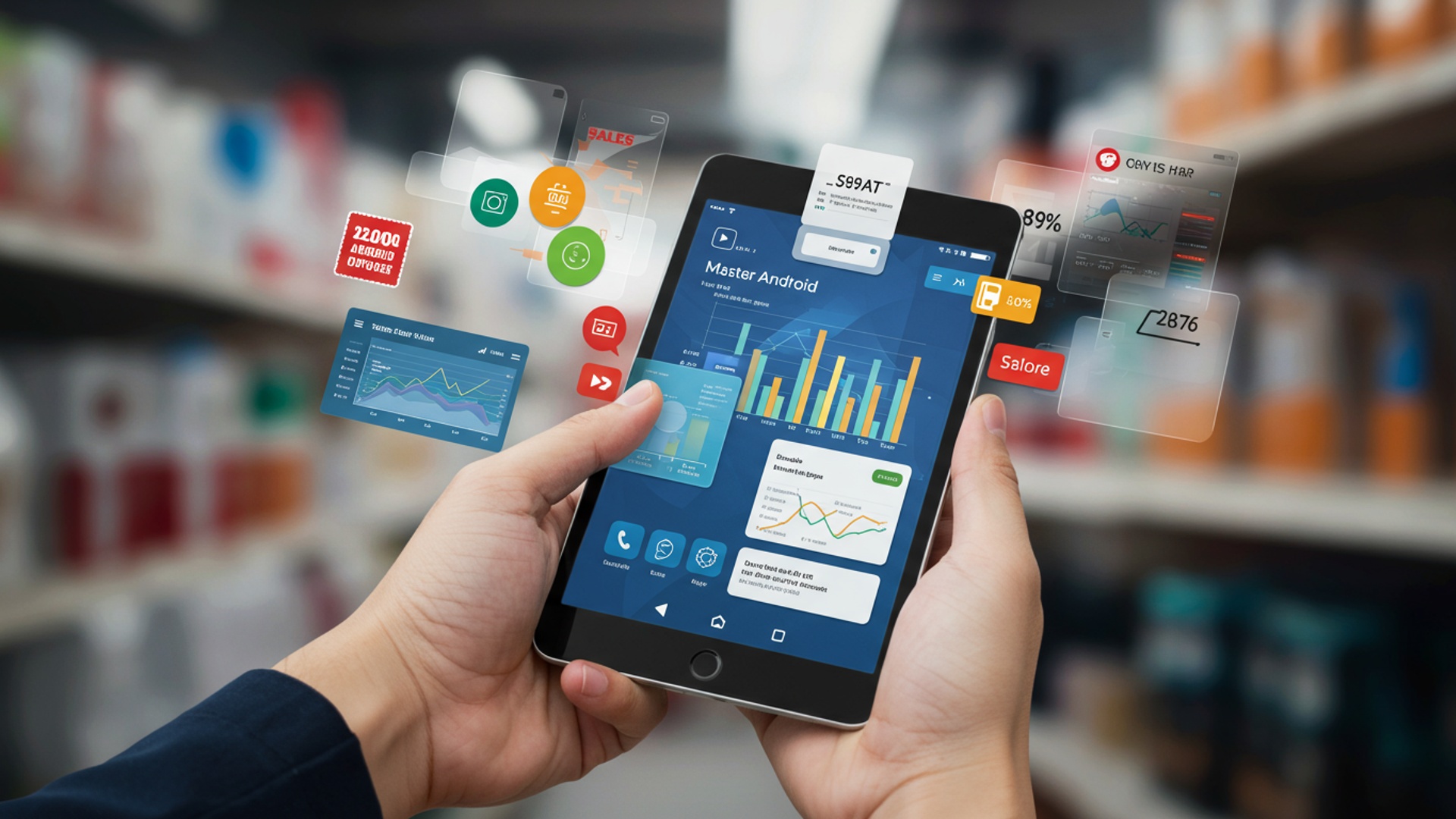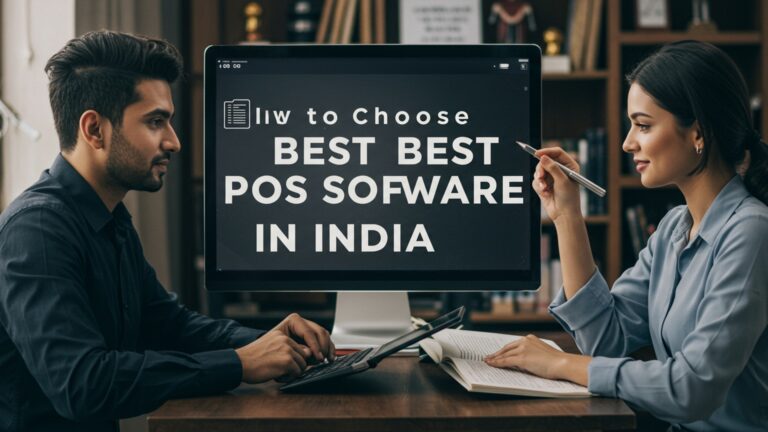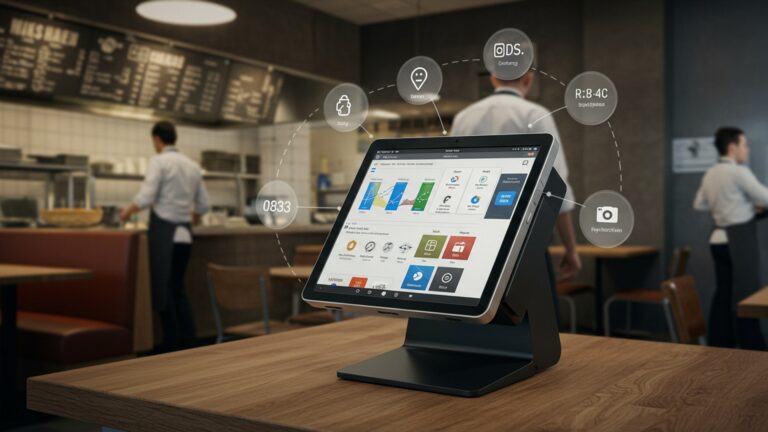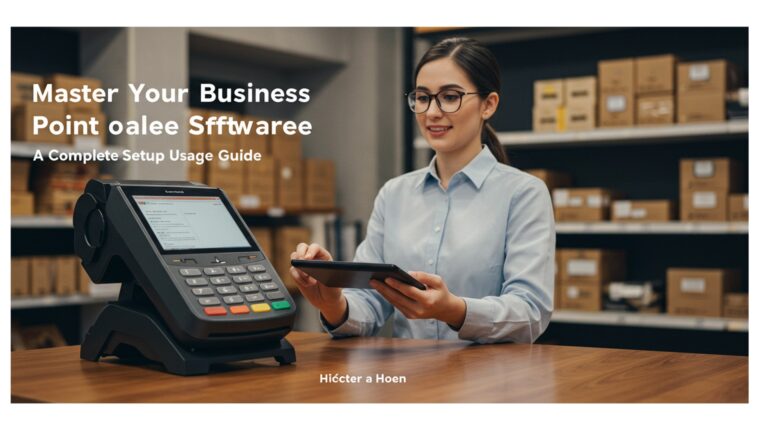Master Android POS Software How to Transform Your Mobile Device into a Sales Hub
Gone are the days of bulky cash registers and clunky point-of-sale systems. Today’s dynamic business landscape demands agility. your mobile device is poised to become its most powerful tool. The proliferation of sophisticated android pos software has revolutionized how small businesses, pop-up shops. mobile service providers manage transactions. Imagine a food truck processing tap-to-pay orders with real-time inventory updates, or a boutique owner instantly emailing digital receipts from a smartphone. This shift leverages ubiquitous smartphone technology and robust cloud integration, offering unparalleled flexibility and data insights previously reserved for enterprise-level operations. Embracing this mobile transformation empowers you to deliver seamless customer experiences and optimize sales from anywhere.

The Evolution of Point-of-Sale: Understanding Android POS Software
The landscape of retail and service industries has undergone a significant transformation, moving from bulky, expensive cash registers to sleek, highly functional mobile devices. At the heart of this revolution lies Point-of-Sale (POS) technology, a system that facilitates transactions and manages various aspects of a business operation. Traditionally, POS systems were proprietary hardware and software combinations, often requiring substantial upfront investment and specialized technical knowledge. But, the advent of powerful, accessible mobile operating systems has paved the way for more agile and cost-effective solutions.
Enter Android POS software. This refers to applications specifically designed to run on Android-powered smartphones, tablets, or dedicated Android POS terminals, effectively turning these devices into a complete sales hub. Unlike traditional systems that are often closed ecosystems, Android POS software leverages the open-source nature and vast app ecosystem of the Android platform, offering unparalleled flexibility and customization. It encompasses the core functionalities of a POS system, including processing sales, managing inventory, tracking customer data. generating reports, all within a familiar and intuitive mobile interface.
The fundamental difference between traditional POS and Android POS software lies in its foundation and architecture. Traditional systems are typically server-based, relying on on-premise hardware and local network infrastructure. Android POS solutions, while capable of local operations, often thrive in a cloud-based environment. This means data is stored securely online, accessible from anywhere. updates are pushed seamlessly, eliminating the need for manual installations and maintenance. This shift not only reduces hardware costs but also enhances mobility, allowing businesses to operate beyond the confines of a fixed counter.
Why Choose Android for Your Business’s POS System?
The decision to adopt Android POS software is driven by a compelling array of benefits that directly address modern business challenges, particularly for small to medium-sized enterprises (SMEs) and mobile operations. Its inherent advantages make it a powerful contender against more traditional, often more expensive, alternatives.
- Cost-Effectiveness
- Flexibility and Mobility
- Wide Range of Hardware Options
- User-Friendliness and Familiarity
- App Ecosystem and Integration Capabilities
- Scalability
One of the most significant draws is the reduced barrier to entry. Businesses can utilize existing Android smartphones or tablets, or invest in affordable Android-based POS terminals, eliminating the need for costly specialized hardware. The software itself often operates on a subscription model, offering predictable monthly expenses rather than large capital outlays.
Android’s mobile nature allows businesses to process sales anywhere – at a table in a restaurant, at a customer’s home for service calls, or at a pop-up market. This mobility is invaluable for enhancing customer service and expanding sales channels. Imagine a food truck operator seamlessly taking orders and payments on a tablet, or a boutique owner assisting a customer on the shop floor with inventory checks and transactions.
The Android ecosystem offers a vast selection of compatible hardware, from ruggedized tablets for demanding environments to sleek smartphones for minimalist setups. This diversity allows businesses to choose devices that perfectly match their operational needs and aesthetic preferences, without being locked into a single vendor’s proprietary hardware.
Millions of people globally are familiar with the Android operating system. This translates to a significantly reduced learning curve for employees, enabling faster onboarding and minimizing training costs. The intuitive touch-screen interface mirrors the daily experience of using a smartphone, making complex tasks feel natural.
The strength of Android lies in its extensive app store. Most quality Android POS software solutions are designed to integrate seamlessly with other essential business tools, such as accounting software (e. g. , QuickBooks, Xero), e-commerce platforms (e. g. , Shopify). loyalty programs. This interconnectedness creates a holistic business management system.
As your business grows, your Android POS software can grow with it. Adding new terminals or expanding to multiple locations is often as simple as installing the app on another device and configuring it. Cloud-based solutions ensure all data is synchronized across all devices and locations in real-time.
Key Features to Look for in Robust Android POS Software
Choosing the right Android POS software is critical for maximizing its potential. A truly effective solution goes beyond mere transaction processing, offering a suite of features that streamline operations and provide valuable business insights. When evaluating options, consider these essential functionalities:
- Inventory Management
- Sales and Transaction Processing
- Customer Relationship Management (CRM)
- Reporting and Analytics
- Employee Management
- Payment Processing Integration
- Offline Capability
This is the backbone of any retail or food service operation. Look for features like real-time stock tracking, low-stock alerts, product variant management (sizes, colors), barcode scanning for quick additions and sales. inventory adjustments. A good system should help prevent stockouts and overstocking.
At its core, the software must facilitate fast and accurate sales. Key features include customizable product catalogs, discount and promotion application, easy returns and exchanges, split payments. the ability to hold or park orders. The interface should be quick and intuitive for high-volume environments.
Building customer loyalty is paramount. An integrated CRM allows you to capture customer insights (names, contact details), track purchase history, manage loyalty programs. offer personalized promotions. This data is invaluable for targeted marketing efforts.
Data-driven decisions are crucial for growth. The software should provide comprehensive reports on sales performance (by product, employee, or time period), profit margins, inventory turnover. customer trends. Customizable dashboards for quick overviews are also highly beneficial.
Manage your team effectively with features such as employee profiles, customizable user roles and permissions (e. g. , restricting access to specific functions), time clock functionality for tracking shifts. sales performance tracking for individual employees.
Seamless integration with various payment processors is non-negotiable. The system should support credit/debit cards, mobile payments (NFC like Apple Pay, Google Pay). ideally, EMV chip card processing for enhanced security. Look for competitive processing rates and transparent fee structures.
Internet outages can disrupt business. A robust Android POS software should offer offline mode, allowing transactions to continue and data to be synced once connectivity is restored. This ensures uninterrupted service and prevents lost sales.
Transforming Your Mobile Device: Essential Hardware and Peripherals
While the Android POS software is the brain of your system, a few key hardware components transform a standard mobile device into a fully functional sales hub. These peripherals enhance efficiency, security. the overall customer experience.
- The Android Device (Smartphone/Tablet)
- Card Readers
- EMV Chip Card Readers
- NFC (Near Field Communication) Readers
- Magstripe Readers
- Receipt Printers
- Thermal Receipt Printers
- Barcode Scanners
- Bluetooth Barcode Scanners
- Integrated Scanners
- Cash Drawers
This is your central processing unit. While a standard smartphone can work for very low-volume operations, a tablet (7-inch to 10-inch) is generally preferred for its larger screen, offering better visibility for product catalogs and easier navigation for staff. Dedicated Android POS terminals, which integrate a screen, printer. card reader into one unit, are also available for a more permanent setup.
These are crucial for accepting modern payment methods.
Essential for processing secure chip card transactions, which significantly reduce fraud liability for businesses. These often connect via Bluetooth or USB.
For contactless payments like Apple Pay, Google Pay. other tap-to-pay cards. Many modern EMV readers include NFC capabilities.
While less secure and phasing out, some businesses may still encounter older cards that require magstripe reading. Many integrated readers include this functionality.
For example, a common setup might involve a Bluetooth-enabled EMV/NFC reader like a Square Reader or a Verifone device, pairing directly with your Android tablet.
Providing customers with a receipt is standard practice.
The most common type, they use heat to print on special thermal paper, eliminating the need for ink. They are fast, quiet. reliable. Many connect wirelessly via Bluetooth or Wi-Fi, allowing for flexible placement.
A popular choice for small businesses is a compact Bluetooth thermal printer that can sit on a counter or even be carried.
Accelerate checkout and inventory management.
These wirelessly connect to your Android device, allowing staff to quickly scan product barcodes for adding items to a sale or updating inventory.
Some Android tablets or dedicated POS terminals come with built-in barcode scanners, offering an all-in-one solution.
For a retail clothing store, a wireless scanner connected to the Android POS software can dramatically speed up checkout times.
For businesses that accept cash, a secure cash drawer is necessary. Many modern cash drawers are “printer-driven,” meaning they connect to your receipt printer, which then triggers the drawer to open after a cash transaction is completed. This requires a receipt printer with a specific
RJ11/RJ12
port.
To provide a professional appearance and secure your tablet, dedicated stands or enclosures are highly recommended. These often include cable management and can be mounted to a counter.
Setting Up Your Android POS System: A Step-by-Step Guide
Implementing an Android POS software system might seem daunting. by following a structured approach, you can efficiently transform your mobile device into a powerful sales hub. This guide provides actionable steps to get you started.
- Choosing the Right Android POS Software
- Installing the App
- Configuring Your Product Catalog
- Product Entry
- Barcode Integration
- Variants
- Import/Export
- Setting Up Payment Methods
- Integrating Peripherals
- Card Reader
- Receipt Printer
- Barcode Scanner
- Cash Drawer
- Training Staff
This is your foundational step. Research various providers, considering their feature sets, pricing models (subscription vs. one-time purchase), customer support. industry-specific functionalities. Look for reviews and compare options like Square POS, Shopify POS, Lightspeed, or Revel Systems, depending on your business size and type. Ensure the chosen software is compatible with your Android device’s operating system version.
Once you’ve selected your software, download its application from the Google Play Store onto your chosen Android smartphone or tablet. Follow the on-screen instructions for initial setup, which typically involves creating an account and logging in.
This is where you input all your inventory details.
Manually add products with names, descriptions, prices. categories.
If you have barcodes, use your Android device’s camera or an external scanner to link products to their codes for quick scanning at checkout.
Set up product variants (e. g. , “T-shirt – Small, Blue”).
Many systems allow bulk import of product data via CSV files, which is invaluable for businesses with extensive inventories.
Example: For a small coffee shop, you would add “Latte,” “Cappuccino,” “Espresso,” with different sizes and corresponding prices. You might also add “Croissant” and “Muffin.”
Connect your chosen payment processor (e. g. , Stripe, PayPal Here, or the built-in processor of your POS software). This involves linking your bank account and configuring accepted payment types (credit/debit cards, cash, mobile payments). Ensure your EMV/NFC card reader is paired via Bluetooth or connected via USB.
Most will pair via Bluetooth. Go to your Android device’s Bluetooth settings, make the reader discoverable. pair it. Then, within the POS app, select the paired reader.
For Wi-Fi printers, ensure they are on the same network as your Android device. For Bluetooth printers, pair them similarly. Within the POS app, navigate to printer settings and select your installed printer.
If using an external Bluetooth scanner, pair it via Bluetooth.
If printer-driven, connect the cash drawer’s RJ11/RJ12 cable to the designated port on your receipt printer. The POS software will then automatically trigger the drawer.
It’s crucial to test each peripheral after setup to ensure seamless operation.
Even with intuitive android pos software, proper training is essential. Conduct hands-on sessions covering sales processing, returns, inventory lookups, opening/closing procedures. troubleshooting common issues. Emphasize the importance of data accuracy.
Real-World Example: A Mobile Boutique’s Transformation
Consider ‘The Wandering Wardrobe,’ a small mobile fashion boutique that operates out of a custom-fitted van at various markets and festivals. Before adopting android pos software, they struggled with manual sales logs, clunky cash-only transactions. cumbersome inventory tracking using spreadsheets. They invested in a rugged Android tablet, a compact Bluetooth EMV/NFC reader. a portable thermal printer. After setting up their Shopify POS app on the tablet, they uploaded their entire clothing catalog, complete with photos and variants. Now, at any location, they can instantly process credit card payments, email receipts, track real-time inventory across all items. capture customer email addresses for marketing. This transformation significantly boosted their professionalism, increased sales by accepting diverse payment methods. reduced administrative overhead, allowing them to focus more on curating their collection.
Security and Data Management in Android POS Environments
While the flexibility of Android POS software is a significant advantage, it also introduces unique considerations for security and data management. Protecting sensitive customer and business insights is paramount. a robust strategy is essential.
- Data Encryption
- User Access Control
- PCI DSS Compliance
- Cloud Backup and Redundancy
- Regular Software Updates
- Physical Device Security
- Network Security
Ensure that your chosen Android POS software employs strong encryption for all data, both in transit (when communicating with cloud servers) and at rest (when stored on the device or in the cloud). This protects against unauthorized access to payment insights, customer details. sales data. Look for solutions that adhere to industry standards like TLS/SSL for communication encryption.
Implement a strict system of user roles and permissions. Not all employees need access to every function of the POS system. For instance, a cashier might only need access to sales processing, while a manager requires access to inventory management, reporting. refunds. This minimizes the risk of internal fraud or accidental data manipulation.
If you’re handling credit card transactions, your system must comply with the Payment Card Industry Data Security Standard (PCI DSS). While your android pos software provider and payment processor are primarily responsible for their compliance, you, as a merchant, also have obligations. Ensure your chosen solutions are certified PCI compliant. follow best practices like not storing sensitive card data locally.
Most modern Android POS software solutions are cloud-based, meaning your data is automatically backed up off-site. This protects against data loss due to device damage, theft, or local hardware failure. Verify that your provider has robust backup and disaster recovery protocols in place.
Keep your Android operating system and the POS application updated. Software updates often include critical security patches that address newly discovered vulnerabilities. Neglecting updates can leave your system exposed to threats. Enable automatic updates where possible.
Don’t overlook the physical security of your Android device. Use strong passwords or biometric authentication (fingerprint, face ID). consider using device management solutions that allow remote wiping in case of theft. Secure stands or enclosures can also deter opportunistic theft.
Ensure your Wi-Fi network is secure. Use WPA2/WPA3 encryption, a strong, unique password. consider separating your POS network from guest Wi-Fi.
Comparison: Cloud-Based vs. On-Premise Android POS Solutions
When considering Android POS software, a fundamental decision involves choosing between cloud-based and on-premise deployments. Both have distinct advantages and disadvantages that cater to different business needs and operational philosophies.
| Feature/Aspect | Cloud-Based Android POS | On-Premise Android POS |
|---|---|---|
| Data Storage | Data stored securely on remote servers (cloud). Accessible via internet. | Data stored on local server hardware within the business premises. |
| Accessibility | Access from any internet-connected device, anywhere. Ideal for multi-location or mobile businesses. | Primarily accessible within the local network; remote access requires VPN or specific configurations. |
| Cost Model | Subscription-based (monthly/annual fees). Lower upfront cost. | Higher upfront cost for server hardware and software licenses. Potentially lower recurring fees. |
| Maintenance & Updates | Managed by the vendor. Automatic updates, minimal IT involvement. | Managed by the business’s IT staff or third-party IT support. Manual updates required. |
| Scalability | Highly scalable. Easily add new terminals or locations by adding subscriptions. | Scalability limited by local hardware capacity; requires hardware upgrades for significant expansion. |
| Security | Vendor responsible for server security and data encryption. Business responsible for local device security. | Business entirely responsible for server security, network security. data backups. |
| Offline Capability | Many offer offline mode, syncing data once internet connection is restored. | Operates continuously as long as the local network is functional. |
| Integration | Often designed for seamless integration with other cloud-based business apps (accounting, e-commerce). | Integration can be more complex, requiring custom development for local systems. |
| Control | Less direct control over server infrastructure; reliant on vendor. | Full control over data and system configuration. |
| Best For | SMEs, mobile businesses, multi-location operations, those seeking low IT overhead. | Larger enterprises with dedicated IT teams, specific compliance needs, or extensive customization requirements. |
Real-World Impact: Case Studies and Success Stories
The practical application of Android POS software is best illustrated through real-world examples, showcasing its versatility and transformative power across various business types.
Case Study 1: The Local Artisan Bakery – Increased Efficiency and Customer Engagement
“The Daily Crumb,” a popular artisan bakery, initially relied on a traditional cash register and manual order taking. This led to long queues, errors in change. no way to track customer preferences. They adopted an Android tablet running Square POS. The setup included a sleek tablet stand, a Bluetooth receipt printer. a connected EMV card reader. Now, cashiers quickly tap orders on the intuitive Android interface, apply loyalty points for repeat customers. process payments instantly. The tablet also serves as a digital menu display. The bakery reported a 20% reduction in transaction times, a significant decrease in cash handling errors. a 15% increase in customer loyalty program sign-ups within the first three months. The ability of the android pos software to generate daily sales reports by product allowed them to optimize their baking schedule, reducing waste and increasing popular item availability.
Case Study 2: Mobile Pet Grooming Service – Enhanced Professionalism and Mobility
“Paws & Polish” is a mobile pet grooming service operating out of a custom-fitted van. Their previous system involved handwritten invoices and a separate portable card reader, making billing cumbersome and prone to errors. They switched to a robust Android smartphone running a specialized mobile POS app. This compact setup allows the groomers to process payments, schedule appointments. manage client records (including pet medical history and grooming preferences) directly from the customer’s driveway. They use the phone’s camera to scan pet product barcodes for on-the-spot sales. The android pos software‘s cloud syncing capability means all appointments and sales data are updated in real-time for the main office, streamlining operations. This move elevated their professional image, eliminated invoicing errors. made their mobile service truly seamless.
Case Study 3: Pop-Up Art Gallery – Streamlined Operations for Temporary Venues
An independent artist collective, “Canvas & Code,” frequently hosts pop-up art galleries in rented spaces. Their challenge was setting up a fully functional sales system quickly and affordably for temporary events. They opted for an Android tablet with a versatile android pos software solution that offered strong inventory management and multiple user accounts. Artists could log in to sell their own pieces, with sales automatically attributed to them. The system integrated with a portable Wi-Fi receipt printer and a standalone card reader. This allowed them to accept all forms of payment, manage a diverse inventory from multiple artists. provide instant sales reports at the end of each event. The ease of setup and teardown, combined with the comprehensive features of the Android POS, made their pop-up events far more professional and profitable than before, eliminating the need for complex, temporary network installations.
Actionable Takeaways for Implementing Your Android POS System
Transforming your mobile device into a sales hub with Android POS software is a strategic move that can significantly benefit your business. To ensure a successful implementation and maximize your return on investment, consider these actionable steps:
- Start Small, Scale Up
- Prioritize Security from Day One
- Invest in Quality Peripherals
- Train Your Team Thoroughly
- Leverage Analytics for Informed Decisions
- Plan for Connectivity
- Seek Support and Community
Don’t try to implement every feature or peripheral at once. Begin with the core functionalities you need most – sales processing, inventory. payment acceptance. Once your team is comfortable, gradually introduce more advanced features like CRM, loyalty programs, or additional reporting tools. This phased approach minimizes disruption and allows for smoother adoption.
Before processing your first transaction, ensure your Android device, Wi-Fi network. chosen POS software are secured. Use strong, unique passwords, enable two-factor authentication where available. keep all software updated. Regularly review user permissions to ensure only necessary access is granted. A breach can be devastating, so proactive security is non-negotiable.
While the Android device itself is versatile, don’t skimp on essential peripherals like card readers, receipt printers. barcode scanners. Reliable, high-quality hardware will ensure smooth transactions, reduce frustrating technical glitches. enhance your customers’ experience. Research compatibility with your chosen android pos software before purchasing.
Even the most intuitive software requires proper training. Dedicate time to walk your staff through all aspects of the POS system – from basic sales and returns to inventory lookups and end-of-day procedures. Encourage questions and provide ongoing support. A well-trained team is more efficient and less prone to errors.
One of the most powerful features of modern Android POS software is its reporting and analytics capabilities. Don’t just use it for transactions; regularly review sales data, inventory trends. customer insights. Use this data to make informed decisions about product ordering, marketing strategies, staffing levels. business growth.
While many Android POS solutions offer offline mode, a stable internet connection is crucial for seamless cloud syncing, payment processing. real-time data access. Ensure you have reliable Wi-Fi or a strong mobile data plan, especially for mobile or pop-up operations. Consider a backup internet option if connectivity is critical.
Familiarize yourself with your android pos software provider’s support resources – online knowledge bases, customer service channels. user communities. These can be invaluable for troubleshooting, learning best practices. discovering new ways to utilize your system effectively.
Conclusion
You’ve now seen how your mobile device can become a formidable sales hub, transforming the way you conduct business with Android POS software. The true power lies in embracing this newfound agility and efficiency. My personal tip is to start small – perhaps test it during a pop-up event or for a specific product line before fully integrating it. Think of the thriving farmers’ market vendor or the nimble e-commerce delivery driver, seamlessly processing sales with just their smartphone and a compact card reader. This isn’t just about processing transactions; it’s about gaining real-time insights into your inventory and customer preferences, even while on the move. To truly leverage this, ensure your chosen Android POS integrates smoothly with popular payment gateways and offers robust cloud-syncing capabilities, a crucial feature in today’s mobile-first economy. The time for bulky, stationary POS systems is fading. Embrace the future by empowering your business with the flexibility and efficiency of Android POS. Your mobile device isn’t just for communication; it’s your next powerful sales tool, ready to unlock unprecedented growth.
More Articles
Unlock Business Growth with Android POS Software Your Complete Tutorial
Master Mobile POS Software Essential Guide for On-the-Go Business Operations
Why Cloud Based POS Software is Your Business Future Learn How to Adopt It
How to Choose the Best Billing and POS Software for Your Business Needs
Simplify Your Billing Process How to Choose POS Billing Software Solutions
FAQs
What exactly is this ‘Master Android POS Software’ thing?
It’s a smart software solution that lets you turn your regular Android mobile device – like your smartphone or tablet – into a full-fledged Point of Sale (POS) system. This means you can process sales, manage transactions. run your business directly from the device you already own.
So, how does my phone actually become a sales hub with this software?
Once installed, the software equips your mobile device with all the necessary POS functionalities. You can input product details, scan barcodes (often using the device’s camera), calculate totals, accept various payment methods (like cash, card via external reader, or mobile payments). even print receipts (with a connected portable printer). It essentially digitizes and streamlines your sales process on the go.
Do I need a special super-fancy phone for this, or will my regular Android device work?
Most standard Android smartphones and tablets are perfectly capable! The software is designed to be compatible with a wide range of Android devices. As long as your device meets basic operating system requirements, you should be good to go. No need for a super-expensive, specialized gadget.
What are the big advantages of using my mobile device as a POS system?
There are quite a few! You get incredible flexibility and mobility – sell anywhere, anytime. It’s often more cost-effective than traditional POS hardware. It saves space, simplifies operations. usually offers real-time sales data, helping you make quicker, smarter business decisions. Plus, it’s super convenient.
Is my customer’s data and my business info safe if I’m just using a phone?
Absolutely, security is a top priority. Reputable Android POS software employs strong encryption and secure data handling protocols to protect both your business insights and your customers’ transaction data. Always ensure you’re using a trusted software provider and keep your device’s security features up to date.
Can this software help me keep track of my inventory too?
Yes, many robust Android POS software solutions include integrated inventory management features. You can track stock levels, add new products, manage variants. even get alerts when items are running low. This helps prevent stockouts and gives you better control over your product offerings.
Is it complicated to get this whole system up and running? I’m not a tech wizard.
Not at all! The beauty of modern Android POS software is its user-friendly design. Setup is typically straightforward with clear instructions. Most interfaces are intuitive, making it easy for anyone, regardless of their tech background, to quickly learn and start using it for daily sales operations.






